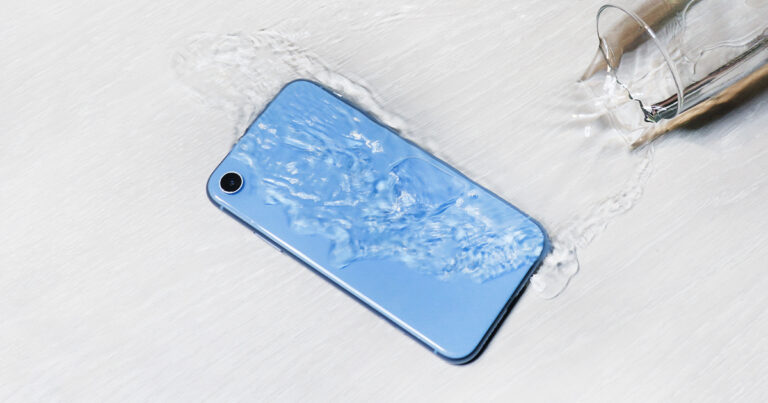How wet can you get?
IP rating guide: IP66, IPX7? Water-resistance explained

One of the most important features we look for in the latest smartphones and wearable technology is water resistance. These days most devices that leave your house every day offer some degree of protection, thankfully. But not every device offers the same level of protection. IP ratings tell us just how much dust and water our devices are protected against. Some devices should only be exposed to a bit of sweat while others can be fully submerged up to a point.
The IP (Ingress Protection) rating scale is an internationally recognised coding system that describes the conditions each device has been tested against. It’s also a handy reference guide for consumers who need to know what level of dust and water protection their device offers.
IP rating meaning
When you see a product advertise an IP rating, you’ll see the letters ‘IP’ followed by two numerals. For example, the iPhone 12 has an IP68 rating for water and dust resistance. The two numbers after IP represent solid and liquid resistance, in that order. In the case of the iPhone 12, the 6 represents solid resistance (e.g. dust) and the 8 represents liquid resistance (e.g. water).
IP(S)(L)
- S= Solid resistance
- L = Liquid resistance
Sometimes you will see an X or 0 in an IP rating. A rating of 0 means the device is not protected against any solid or liquid ingress. Whereas a rating of X means the device has simply not been tested for solid or liquid ingress. For example, the Google Pixel Buds A are rated IPX4. That shows that the Pixel Buds A have been tested for water resistance but not solid or dust resistance. The Pixel Buds A can withstand some degree of dust and solid ingress but Google either hasn’t tested dust resistance thoroughly or it hasn’t made an official claim on the matter.
Solid resistance is rated on a scale of 0 - 6 and liquid resistance is rated on a scale from 0 - 8. IP00 or IPXX is the lowest protection on the IP rating scale and IP68 is the highest.
IP rating chart
Now that we know the basics, the IP rating scale is relatively easy to understand. Essentially, the bigger the number, the more protection a device offers against dust and water. With that being said, each number in the IP rating scale represents specific testing conditions against a particular type and volume of solid or liquid. So while a higher IP rating is a good broad indicator of its protection, it’s still good to reference the IP rating chart below to find out exactly what your device is protected against.
Is water damage covered by the manufacturer's warranty?
Even though manufacturers advertise a degree of water and dust resistance, water damage isn’t necessarily covered by your manufacturer’s warranty. For example, Apple’s one-year warranty doesn’t cover liquid damage. Apple can make claims about the water and dust protection of its devices but it actively discourages users from intentionally getting their device wet. In this instance, the IP rating is intended as a guide, not a guarantee.
Thankfully, there’s such a thing as consumer law. In Australia, consumer law protects you for a “reasonable period from the date of delivery until the failure becomes apparent”. That’s a broad classification that shouldn’t be abused. But if you have reason to believe your device hasn’t been exposed to conditions greater than what the device’s IP rating claims are protected, you may be able to explore your options with the manufacturer. The IP rating is a reliable indicator of the conditions your device can take but there’s always the chance you’ve received a faulty unit.
What are some phones with IP68 dust and water resistance?
While water and dust resistance used to be a massively competitive space in smartphones, most flagship handsets these days offer IP68 water and dust resistance. IP68 protection means the device is completely dust resistant and is capable of surviving submersion in water 1-metre deep and beyond. Some IP68-rated handsets can survive for longer in deeper water. For example, the iPhone 13 Pro Max claims it can be submerged in water up to 6 metres deep for 30 minutes at a time whereas the Galaxy S21 Ultra is only protected in depths up to 1.5 metres at 30 minutes at a time. As a rule of thumb, you still don’t want to risk dropping your phone in anything deeper than 1 metre.
Here’s a short list of some popular smartphones that are rated IP68 for dust and water resistance:
- iPhone 13 Pro Max
- iPhone 13 Pro
- iPhone 13
- iPhone 12 Pro Max
- iPhone 12 Pro
- iPhone 12
- iPhone 11 Pro Max
- iPhone 11 Pro
- iPhone 11
- iPhone SE (2020)
- Samsung Galaxy S21 Ultra
- Samsung Galaxy S21
- Samsung Galaxy S20 FE
- Samsung Galaxy Note 20 Ultra
- OnePlus 9 Pro
- Google Pixel 5
Related Articles



